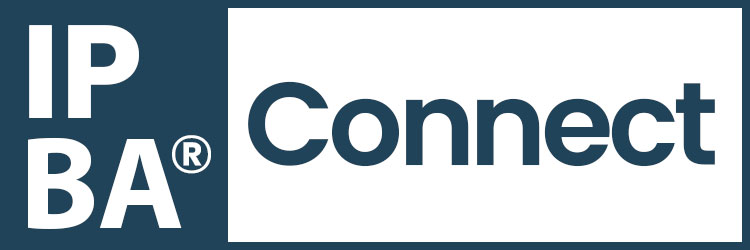How IP Shapes Branding, Marketing, Advertising, Packaging, and Franchising
This is a summary of the lecture by Nina Kolar, Dennemeyer about Branding, Marketing, Advertising, Packaging, and Franchising from the joint CEIPI European Patent👉 A legal right granting exclusive control over an invention for a limited time. Office Diplom Universitaire IP Business Administration
Intellectual property👉 Creations of the mind protected by legal rights. (IP) plays a pivotal role in modern business, influencing key areas such as branding, marketing, advertising, packaging, and franchising. Nina Kolar’s insightful lecture explores how businesses can leverage IP to create value, protect assets, and drive growth. This summary dives into the interconnectedness of IP with these commercial strategies, offering a clear understanding of how trademarks, copyrights, industrial designs, and trade secrets underpin successful business practices.
Introduction to IP in Business
Nina Kolar’s lecture underscore the role of intellectual property (IP) as a cornerstone of business success. IP assets such as trademarks, copyrights, industrial designs, and patents enable businesses to differentiate themselves in competitive markets. These assets are instrumental in branding, marketing, advertising, packaging, and franchising—key pillars for commercialization and monetization.
Branding: Establishing Identity
Definition and Purpose
Branding is the process of associating a product or business with specific elements like a name, logo, or idea to create a unique identity. A strong brand👉 A distinctive identity that differentiates a product, service, or entity. communicates personality traits (e.g., luxury, innovation👉 Practical application of new ideas to create value.) that resonate with customers. Brands like Rolex (luxury), Apple (innovation), and McDonald’s (consistency) demonstrate how branding builds trust and loyalty.
Key Elements of Branding
Branding establishes a business’s unique identity through elements like logos, names, and messages, all of which are closely tied to intellectual property (IP).
- Logos: Logos visually represent a brand and are often trademarked to ensure exclusivity. For example, iconic logos like the Nike swoosh or Apple’s emblem are instantly recognizable and legally protected, helping businesses build trust and stand out in competitive markets.
- Business Names: A trademarked business name safeguards a brand’s identity and prevents unauthorized use. This exclusivity reinforces customer trust and ensures that the business’s reputation remains intact, even as it grows or enters new markets.
- Brand Messages: Memorable slogans like “Just Do It” (Nike) or “Think Different” (Apple) communicate a brand’s values and inspire customer loyalty. These messages, often protected by trademarks or copyrights, create emotional connections that strengthen the brand’s identity.
Role of IP in Branding
IP is integral to branding, ensuring businesses can protect and build their unique identity. Trademarks safeguard essential elements like logos, business names, and slogans, preventing misuse and fostering customer trust. Additionally, copyright👉 A legal protection for original works, granting creators exclusive rights. protects creative brand assets such as visuals or taglines, ensuring originality while reinforcing a brand’s distinctiveness in a competitive market.
Marketing: Engaging Customers
Definition and Scope
Marketing is the dynamic process of attracting and retaining customers by fulfilling their needs and desires. It encompasses a wide range of activities, from market research and analysis to promotion, sales, and distribution, all aimed at creating lasting customer relationships and brand loyalty. Marketing encompasses activities aimed at attracting and retaining customers by meeting their needs. It involves strategies like market research, promotion, sales, and distribution.
The Marketing Mix: 7 Ps
- Product
The Product component centres on the tangible goods or intangible services a company offers to meet customer needs. - Place
Place defines the strategic distribution channels and locations where products are made available to customers. - Price
Price encompasses the various strategies used to determine the cost of goods or services, ensuring profitability and competitiveness. - Promotion
Promotion includes diverse advertising and communication methods employed to inform, persuade, and remind customers about a product or service. - People
People refers to the human capital👉 Knowledge, skills, and abilities of individuals driving economic growth., especially customer-facing employees, who directly influence the customer experience and brand perception. - Packaging
Packaging considers the visual appeal and functionality of a product’s container, influencing customer perception and purchase decisions. - Process
Process involves the operational workflows and procedures that impact the customer experience, from order fulfilment to customer service interactions.
Objectives of Marketing
Marketing aims to boost brand visibility and build customer trust. It focuses on driving traffic, increasing revenue, and expanding market share. By meeting customer needs and fostering loyalty, successful marketing strategies lead to sustainable growth and enhanced market positioning for businesses.
Role of IP in Marketing
IP plays a critical role in marketing, protecting the assets that define a brand’s identity and appeal. Trademarks safeguard brand names, logos, slogans, and business names in promotional materials, ensuring exclusivity and recognition. Copyrights protect original creative content like photography, newsletters, and website designs, preventing unauthorized use and maintaining brand integrity. Industrial designs, which cover the aesthetic aspects of products, enhance visual appeal and can be protected to differentiate offerings in the marketplace.
Advertising: Promoting Products
Definition and Types
Advertising is a subset of marketing focused on promoting products or services to specific audiences through various channels:
- Above-the-Line (ATL)
Above-the-Line advertising utilizes mass media channels like television to reach a broad and untargeted audience. - Below-the-Line (BTL):
Below-the-Line advertising focuses on targeted campaigns aimed at specific demographic groups through direct and memorable activities. - Through-the-Line (TTL):
Through-the-Line advertising combines both broad reach and targeted strategies, integrating mass media with direct marketing efforts.
Role of IP in Advertising
IP is crucial in advertising, protecting the elements that capture consumer attention and build brand recognition. Trademarks safeguard slogans like “Just Do It,” logos such as the Nike swoosh, and brand names prominently featured in advertisements, preventing unauthorized use and ensuring brand integrity. Copyrights protect the creative assets within ads, including graphics, layouts, and written content, securing the originality and artistic expression of the work. Industrial designs can also play a role, protecting the unique appearance of user interfaces or packaging showcased in advertisements, further distinguishing a brand’s visual identity.
Packaging: Aesthetic Appeal Meets Functionality
Definition and Functions
Packaging is more than just a container; it’s a strategic tool that blends protection with visual appeal to capture consumer interest. Effective packaging serves multiple crucial functions in the product lifecycle and marketing process.
- Protects the product during storage and transport: The primary role of packaging is to safeguard the product from damage during handling, storage, and transportation.
- Differentiates the product on shelves: Packaging helps a product stand out amidst competitors by employing unique designs, shapes, colours, and materials.
- Communicates essential information to consumers: Effective packaging conveys crucial product details, including ingredients, usage instructions, and branding elements, to inform and persuade consumers.
Examples:
- Coca-Cola’s iconic bottle combines functionality with aesthetic appeal.
- Pharmaceutical packaging includes trademarks (e.g., AstraZeneca’s name), industrial designs (shape), and other IP elements.
Role of IP in Packaging
Intellectual property rights are essential for protecting and differentiating product packaging. Trademarks secure logos or product names displayed on packaging, ensuring brand recognition and preventing consumer confusion. Industrial designs safeguard the unique shapes, patterns, or aesthetic elements of packaging, enhancing visual appeal and setting products apart from competitors. Furthermore, patents may cover innovative packaging processes or materials, providing exclusive rights to novel technologies that improve functionality or sustainability. By leveraging these IP protections, businesses can create packaging that not only protects and promotes their products but also establishes a distinctive market presence.
Franchising: Scaling Through Licensing
Definition
Franchising is an agreement where a franchisor grants a franchisee the right to operate under its business model👉 A business model outlines how a company creates, delivers, and captures value. using its trademarks and other IP assets. This arrangement benefits both parties:
- Franchisors expand their reach without directly managing new locations.
- Franchisees gain access to established brands with lower risks than starting from scratch.
Examples:
- Business Format Franchise (McDonald’s): Franchisees replicate McDonald’s operational model globally while using its trademarks, designs, and procedures.
- Product/Distribution Franchise (Ford): Ford manufactures vehicles sold by franchisees under its trademarked name.
- Manufacturing Franchise (Coca-Cola): Coca-Cola supplies franchisees with its secret formula to produce beverages locally.
Role of IP in Franchising
IP forms the foundation of successful franchising agreements, enabling consistent brand representation and operational efficiency. Trademarks are crucial for protecting the franchisor’s brand identity, ensuring that franchisees adhere to established visual and messaging standards. Copyrights safeguard training materials and operational manuals, guaranteeing consistent training and standardized practices across all franchise locations. Furthermore, trade secrets, such as proprietary processes or recipes like the Coca-Cola formula, provide a competitive edge and are carefully protected within the franchise network, ensuring their exclusive use and benefit.
Conclusion
Nina Kolar’s lecture highlights the symbiotic relationship between intellectual property rights and business strategies for branding, marketing, advertising, packaging, and franchising. By leveraging IP assets effectively:
- Businesses can build strong brands that resonate with customers.
- Marketing campaigns can attract attention while safeguarding creative content.
- Advertisements can use protected elements like slogans or logos for maximum impact.
- Packaging can enhance product appeal while preserving functionality.
- Franchising agreements can facilitate mutual growth through licensed use of IP assets.
In today’s competitive landscape, understanding the intersection of IP with these commercial activities is crucial for sustainable success.


